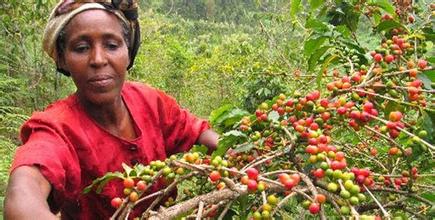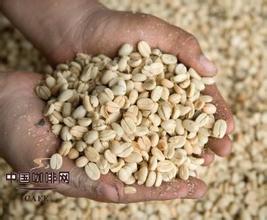Espresso extraction control chart how to make a good Italian latte
Espresso extraction control chart how to make a good Italian latte
Cooking temperature is also very important. The higher the temperature, the faster the reaction takes place, which is universal in most cases. In the case of coffee, the higher the temperature, the faster the extraction. Different compounds have different extraction thresholds, such as caffeine below 30 ℃), but some astringent compounds can only be extracted when they are close to 100 ℃, which is why we should avoid brewing coffee with water above 95 ℃.
This figure depicts the best combination relationship between coffee concentration and coffee extraction rate (not suitable for espresso brewing). The vertical axis represents the concentration of coffee, or TDS (total dissolved solid), expressed as a percentage of the actual coffee product. The horizontal axis represents the extraction rate (yield), expressed as a percentage of the amount of coffee powder dissolved in water to the original dry coffee powder dose. The lower the chart, the lower the coffee concentration, and vice versa, the higher the concentration. Different people's preference for coffee may be distributed in various areas of the picture, after all, the preference for coffee concentration varies from person to person. The brewing ratio directly affects the concentration of coffee. Coffee that falls in the central gray area is generally considered perfect: its concentration and extraction rate are well balanced (the extraction rate is between 18% and 22%, and the concentration is between 1.1% and 1.3%), and the product is sweeter, more mellow and more transparent. The diagonal gray line represents the extraction rate, which succinctly shows what kind of cooking product is too light or insufficient extraction, and what is too thick or too bitter.
Another important factor that needs to be paid close attention to in the cooking process is the cooking ratio. This value is the weight ratio of the coffee liquid to the coffee, which is used to indicate the concentration of the coffee product. The brewing ratio of espresso is usually about 1.5 ∶ 1, that is, one serving of coffee corresponds to one and a half parts of coffee liquid, that is, 20 grams of coffee can produce 30 grams of espresso. The standard ratio of French filter pot brewing is about 15 ∶ 1, that is, 20g of coffee can produce 300g of drink. Because coffee hinders the absorption of some water-2 grams of water for every 1 gram of coffee, it is important to remember that it is calculated using the total weight of the coffee product rather than the weight of the water used for brewing

Important Notice :
前街咖啡 FrontStreet Coffee has moved to new addredd:
FrontStreet Coffee Address: 315,Donghua East Road,GuangZhou
Tel:020 38364473
- Prev

Thickness adjustment of hario 1dtb bean grinder
Hario 1dtb bean grinder thickness adjustment, so brother's final proposal is, in the case of fixed beans, first set the amount of powder, and then find the powder thickness, and then use a more wavering strength to find the feel, obedience should be the highest, but also this point, I think the most can increase wavering, when you use counterbalance beans, find a good scale, determine the amount of powder, with one that you think is more comfortable
- Next

Melaleuca coffee machine cleaning video instructions for descaling steps
Merlot Coffee Machine cleaning Video instructions descaling steps place a container with a capacity of about 0.5 liters below the outlet, and then press the knob. Connect the hose to the water tray and the outlet, and then press the knob to confirm that the comprehensive descaling program will continue. This operation takes about 20 minutes, and the water flows out of the outlet through the coffee machine and enters the water tray through the hose.
Related
- What is the Philharmonic pressure? How to use Philharmonic pressure to make delicious coffee
- Why does a hand grinder have more fine powder than an electric grinder?
- In addition to the hot mom, what is the difference between the versions of EK43 | ditting and Mahdi ek43?
- What kind of equipment do you need to make coffee by hand? Introduction to novice starter cooking equipment tools
- Espresso needs to be ground how thick and thin scale entry Italian Coffee Machine Bean Grinder investigation and Grinding course
- How much does it cost to open a small private cafe? How much does it cost to learn coffee? How to operate it?
- The difference between the flavor characteristics of hand-brewed coffee and coffee maker is hand-brewed coffee really better than coffee maker? Can I use a coffee machine to make coffee beans by hand?
- The difference between 01 and 02 of hario v60 filter cup what is the difference between 01 and 02 filter cup opening and cooking flavor
- What's the difference between the smart cup and the French kettle? Which is better, the French kettle or the Smart Cup?
- What's the difference between a smart cup and a V60 filter cup? The difference between the taste of smart cup and hand-brewed coffee

